Site Menu:
| This is an archived Horseadvice.com Discussion. The parent article and menus are available on the navigation menu below: |
| HorseAdvice.com » Diseases of Horses » Lameness » Diseases of the Lower Limb » Diseases of the Lower Limb topics not covered by the above » |
| Discussion on Toed In...What Can this Horse Do? | |
| Author | Message |
| Member: Terrilyn |
Posted on Tuesday, May 23, 2006 - 2:37 pm: I have posted below several pictures of the front legs of a 12-yo QH mare that I am boarding for an 11-yo beginner. The horse is way too much for her to handle, so the mom has decided to sell her in favor of finding something more suitable. These folks are novices and I'm trying to help them sell the mare. She has the most awkward conformation from the knees down that I've ever observed...Dr. O. or anyone who has observed this before, what is the proper terminology for this conformation and how might it affect a horse long-term? She actually moves quite well. The previous owner stated that "she was born that way, and though it was correctable when she was very young, it wasn't dealt with then." She trail rides, has a nice little jog and lope, but people are horrified by her front feet/legs. Should they be? We're only asking $1,000 for her...she's a nice little horse (needs some work as she's been in a field for several years), but those feet.... Is this type of thing as bad as it looks? She's actually got nice foundation/halter breeding....and I'd love to find her a good home with the right job... 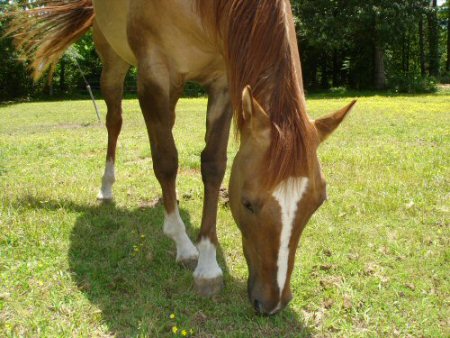 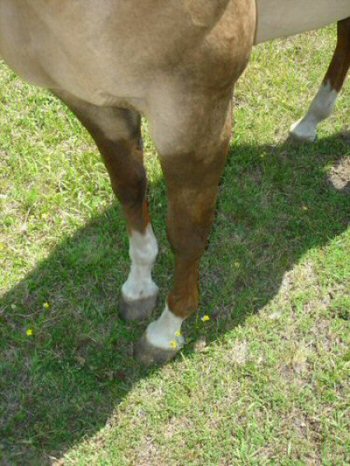 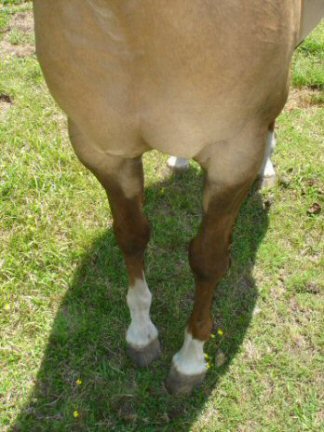
|
| Member: Tuckern |
Posted on Tuesday, May 23, 2006 - 4:06 pm: Hi Terri,She's a really pretty looking horse. I like her face. Is there any way you can get pictures of her standing on pavement or hard ground, so that we can see her hooves better? I'm wondering if the inside hoof wall is longer than the outside, making her feet turn like that. Also try to get down at the level of the hoof, as pictures are sometimes distorted when taking them from a standing position. Also, have x-rays been taken of her legs to see where the bones start turning inwards (if it is not caused by an imbalance in the hooves). Thanks, Nicole in New Mexico |
| Member: Terrilyn |
Posted on Tuesday, May 23, 2006 - 4:50 pm: Yes, my daughter took these for me...I would have gotten to ground level, but I thought I'd start with these since I had them...and it was bugging me! It's definitely way more than a hoof imbalance...but I'll take better pictures and post them tomorrow. (The current owner asked the farrier what could be done and he said the best he could do would be to continue to trim her as balanced as possible...that corrective shoes would be too little too late.) To my knowledge, there are no ex-rays...she comes to us with big gaps in her history prior to the last 4 or 5 years. She did produce a correct foal...I guess I'm just curious as to the statement made by the last owner, that it was correctable at birth. If so, why didn't someone do that for her? Seems a shame.The right front hoof turns in the worst, and it seems to begin twisting just below or at the outside of the knee. From the knee down, it appears to bow in pretty dramatically. I'll post more/better photos tomorrow. |
| Moderator: DrO |
Posted on Wednesday, May 24, 2006 - 7:26 am: We see horses like this occasionally Terri and it is called "toed in" conformation and represents a rotational deformity. This horse would be graded moderate to severely effected. I will wait for better pictures to evaluate the amount of angular deformity and the location of the rotation but in general this deformity combined with this severity is considered a pretty significant weakness of the legs.DrO |
| Member: Terrilyn |
Posted on Wednesday, May 24, 2006 - 9:25 am: Here are several more better photos...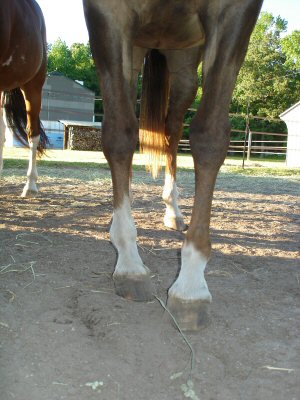 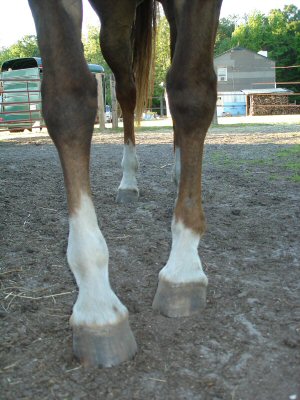 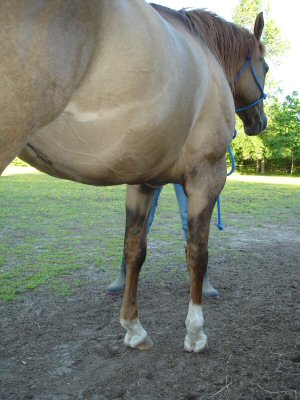 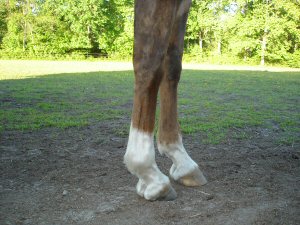 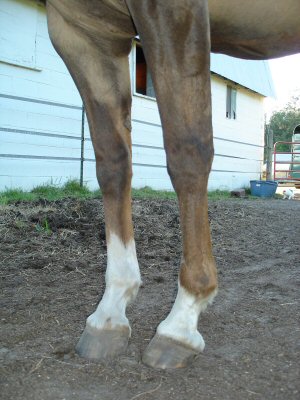 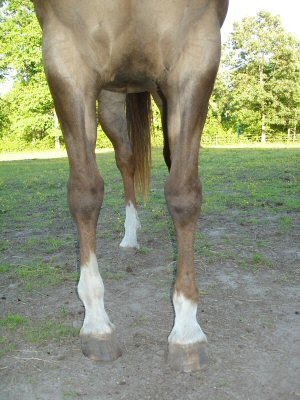 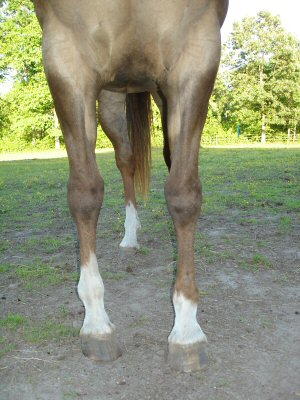 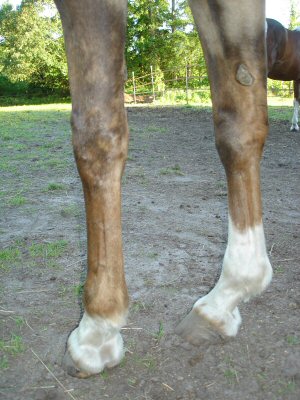 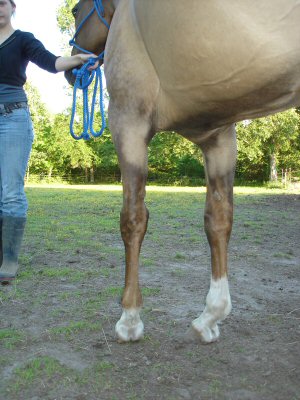 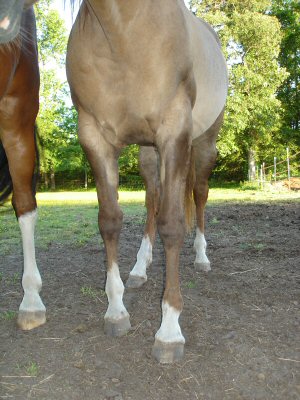
|
| Moderator: DrO |
Posted on Thursday, May 25, 2006 - 8:32 am: Besides the toed in conformation from the fetlock down there is some amount of varus (inward angulation) deviation of the legs from at least the fetlock down. Together these conformational defects make arthritis of the lower legs, tendinitis of the flexors, and even navicular bone pathology more likely. This horse is best suited for light trail riding to minimize those possibilities.DrO |
Horseadvice.com
is The Horseman's Advisor
Helping Thousands of Equestrians, Farriers, and Veterinarians Every Day
All rights reserved, © 1997 -
is The Horseman's Advisor
Helping Thousands of Equestrians, Farriers, and Veterinarians Every Day
All rights reserved, © 1997 -
